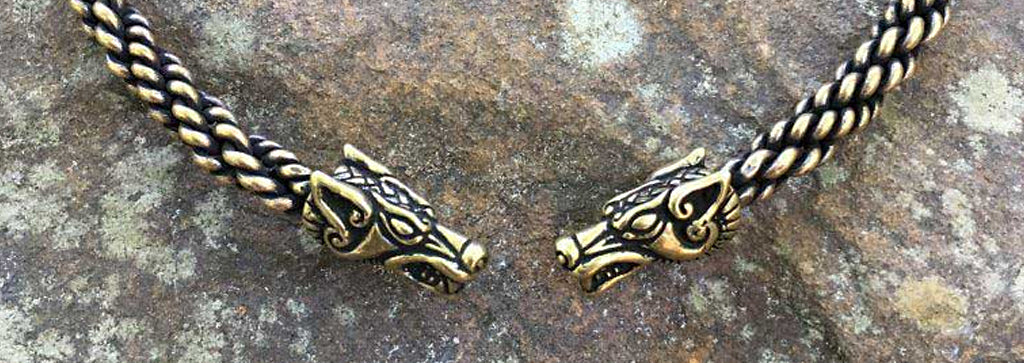Thanks for visiting our blog! As a thank-you, enjoy 15% off your first order in our online Viking Shop with the discount code BLOG15.

The torc, a type of 'neck ring' jewelry, is typically associated with ancient Celtic culture, however historical references indicate that it was also a popular form of jewelry worn by Viking warriors, Viking women and Viking nobility.
Here’s a look at the evidence supporting the use of torcs among the Vikings:
1. Archaeological Findings
Archaeological evidence is one of the primary sources indicating the Vikings' use of torcs. Several burial sites across Scandinavia have revealed torcs made from various materials, including gold, silver, and bronze.
-
Birka, Sweden: The Birka graves, dating from the 8th to 10th centuries, have yielded numerous examples of Viking torcs. Notably, the graves of high-status individuals often contained elaborate torcs, indicating their significance as status symbols.
-
Buskerud, Norway: The famous Hoen Hoard found in Norway revealed a wide variety of Viking jewelry including gold bracelets and gold torcs.
-
Gnezdovo, Russia: Excavations at the Gnezdovo site, which was a major Viking settlement, uncovered several torcs among other grave goods. These finds further support the notion that torcs were part of Viking attire.
2. Written Records
Historical texts and sagas, though less concrete than archaeological evidence, provide valuable insights into Viking customs, including the wearing of torcs.
-
The Sagas of Icelanders: These medieval Icelandic texts, written in the 13th century but based on earlier oral traditions, frequently mention torcs as gifts or war spoils. For example, the Laxdæla Saga describes a torc given as a symbol of loyalty and alliance.
-
Anglo-Saxon Chronicles: While primarily focused on the Anglo-Saxon perspective, these chronicles occasionally mention Viking leaders wearing or gifting torcs, highlighting their role in diplomatic and social contexts
-
921AD Written Account: Ahmed Ibn Fadlan was a diplomat from the Abbasid court and in his historic descriptions of the Vikings he wrote, "Around their necks each woman wears a torc of gold or silver, for each man as soon as he accumulates 10,000 dirhams has a torc made for his wife… every time he increases his wealth 10,000 he has another torc made for his wife, so one woman may wear many torcs.”
3. Runestones
Runestones from the Viking Age provide additional evidence of torcs:
-
Jelling Stones, Denmark: These massive runestones, erected by King Harald Bluetooth in the 10th century, depict figures wearing torc-like neck ornaments. While stylized, these images are interpreted by some scholars as representations of torcs.
-
Gotland Picture Stones: The picture stones from Gotland, Sweden, often show warriors adorned with what appear to be torcs. These stones, dating from the 5th to 11th centuries, are a rich source of iconographic evidence.
Conclusion
The evidence from archaeological finds, historical texts, and iconographic sources collectively suggests that torcs were indeed part of Viking culture. They served not only as personal adornments but also as symbols of status, wealth, and allegiance.
Sons of Vikings provides a wide variety of Viking & Celtic Torcs for sale.
Sources
- Hårdh, B. (1996). Silver in the Viking Age: A Regional-Economic Study. Acta Archaeologica Lundensia.
- Graham-Campbell, J. (2013). Viking Artefacts: A Select Catalogue. British Museum Press.
- Price, N. (2002). The Viking Way: Religion and War in Late Iron Age Scandinavia. Oxbow Books.
- The Sagas of Icelanders. (2000). Penguin Classics.
- Graham-Campbell, J., & Kidd, D. (1980). The Vikings. British Museum Publications.


